Kim Kardashian is no stranger to a fleeting moment becoming a viral news story. But her recent appearance at the Met Gala, wearing the dress that Marilyn Monroe wore to sing Happy Birthday to President John Kennedy in 1962, proved particularly divisive, with the 41-year-old outraging costume buffs for sporting what is considered by many to be a museum exhibit rather than a dress.
Designed by Jean Louis, based on a sketch by a young Bob Mackie, the dress has more than 2,000 crystals hand-stitched into souffle silk, a fabric that has since been outlawed due to its flammability. Monroe was reportedly sewn into it and wore it only for the time she was on stage. Kardashian borrowed it from Ripley’s Believe It Or Not!, which bought the garment for $4.8m for the garment in 2016 – making it, as its website crows, “the world’s most expensive dress”.
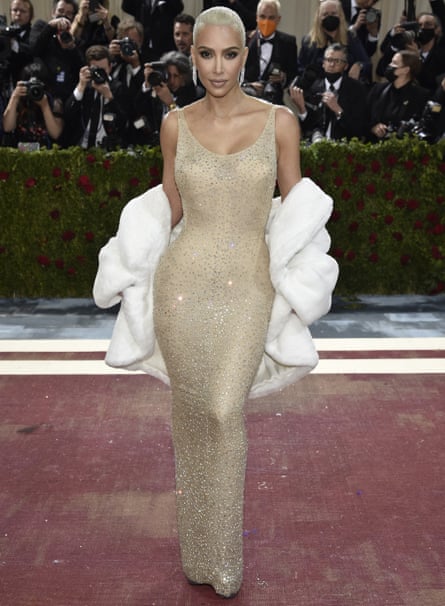
Whatever your feelings about Gala-gate, the furore does make you wonder about the fate of other coveted – and increasingly valuable – outfits from Hollywood history. Another high-profile costume also hit the headlines recently: the gingham dress worn by Judy Garland as Dorothy for The Wizard of Oz. Up to 10 dresses were made for the production and one was put up for auction by the Catholic University of America in May, after it was found in a long-forgotten shoebox. It was swiftly removed from auction, however, when a niece of Father Gilbert Hartke, who worked at the university, claimed it was hers. It’s no wonder she is making a claim: it was expected to go for somewhere between $800,000 and $1.2m.
John Fricke, an expert on Oz and Garland, says this is only one item of interest from the film. Its five pairs of ruby slippers have had some adventures, too. One pair are in the FBI’s possession: the agency recovered them after they were stolen from an exhibition in 2005. The most pristine pair were meant to be sold as part of an MGM auction in 1970 but they were kept – along with one of the dresses – by Kent Warner, a costume designer hired to catalogue the lots. “Through divine intervention,” says Fricke, “they ended up being bought by a consortium of Hollywood majors [including] Spielberg and Leonardo DiCaprio.” These slippers were then donated to the Academy Museum in LA because, as Dorothy says, there’s no place like home.
The movie star Debbie Reynolds acquired a huge costume collection, starting with that MGM sale, where she bought Elizabeth Taylor’s outfits from National Velvet, Leslie Caron’s schoolgirl costume from Gigi and some ruby slippers. But where she saw treasure, others in the industry saw trash. As her collection grew – eventually including the black and white outfit Audrey Hepburn wore in My Fair Lady, and the white dress Monroe wears over the hot-air vent in The Seven Year Itch – she repeatedly asked the Academy of Motion Picture Arts and Sciences to help her preserve them and showcase some of her pieces in its long-awaited museum, but was always turned down.
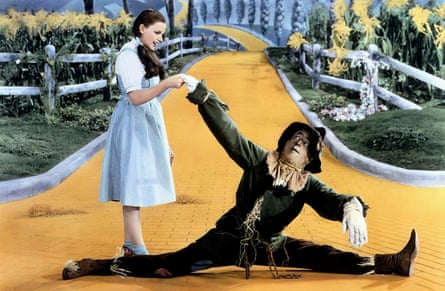
Reynolds ended up selling key pieces to collectors in 2011. Monroe’s dress fetched $4.6m while Hepburn’s took $3.7m. Reynolds died in 2016 and, four years later, her wish was posthumously granted. The Academy Museum – which finally opened in 2021, having been first mooted back in 1929 – worked with Reynolds’ son, Todd Fisher, to exhibit the remaining pieces in her collection.
Costume designer turned academic Deborah Nadoolman Landis, who collaborated with Reynolds when curating the V&A’s Hollywood Costume exhibition in 2013, says such outfits were overlooked because they were seen as chiefly of interest to women and therefore less important. “It’s sad,” she says. “But I have to talk about gender.” Costume designers were lumped in with art directors until 2013, when the powers that be finally changed what Landis calls “this misogynistic and dynastic incongruity”.
This gendered thinking, it turns out, is still alive and well. “Marilyn’s DNA was all over the dress that went to the Met Gala,” says Landis, incredulous. “I know this sounds like heresy, but would you be taking something from the Getty Museum or the British Museum and then having wine in it?”
Fricke believes the film establishment were the last people to get the memo on the popularity of costumes. “Hollywood didn’t know it. The world knew it. And they continue to know it.” He says some collectors are only in their 30s, so were born long after the golden age, yet they are devoted to stars like Garland.
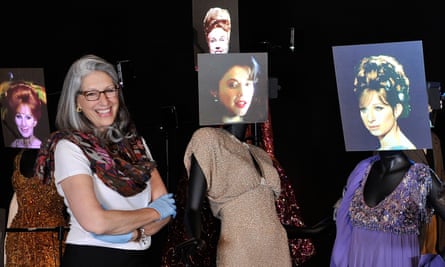
Back to the Kardashian controversy. Although the star says she wore the souffle silk for only four minutes on the red carpet, changing into a replica after, critics claim it has been damaged beyond repair. Images of the dress post-gala, appearing to show wear and tear around the straps and zip, circulated on social media, along with a video from Ripley’s that shows several people gingerly fitting the dress on to Kardashian.
Ripley’s has since denied the damage was a result of this, maintaining in a statement: “Kim Kardashian wearing the ‘Happy Birthday’ dress has been hotly contested, but the fact remains that she did not, in any way, damage the garment in the short amount of time it was worn at the Met Gala.” Kardashian herself said the same. Asked if there was damage when she appeared on NBC’s Today talk show, she responded: “No … Ripley’s [and I] worked together so well. There were handlers in gloves that put it on me.”
Scott Fortner, who runs the Instagram account The Marilyn Monroe Collection, is the man who posted images of the apparently damaged dress. He blames Ripley’s rather than Kardashian and says that, within a day of posting the images, his follower numbers soared from 60,000 to 80,000. He hopes this exposure will change how such objects are perceived and preserved. “This isn’t just a dress,” he says. “This is a part of American culture.”
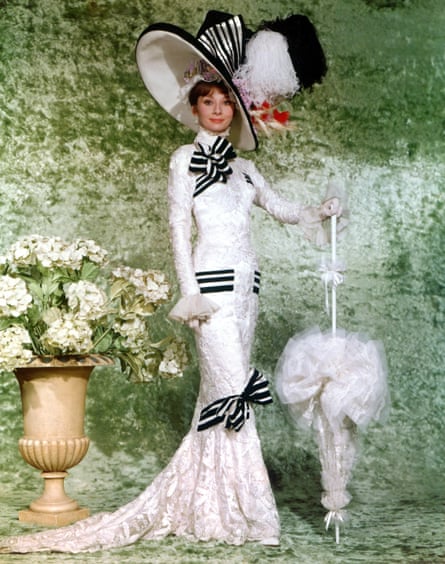
Martin Nolan is executive director of Julien’s auction house, which originally sold the dress to Ripley’s, and brokered the introduction with Kardashian. He agrees about its significance, but believes the star wearing it only increased Monroe’s status as a legend. “When she came to us, I said, ‘That’s a brilliant idea.’ Because it was 60 years ago that Marilyn wore it – and it was going to get new life.”
The life of Monroe’s dress after her death should have given the industry some idea of how sought-after such things were. Nolan said he first came across it in his former life as an investment banker on Wall Street in 1999. “I used to follow an investor by the name of Martin Zweig,” he says, referring to the analyst who predicted the 1987 crash. “I read in the New York Times that he bought a dress for $1.2m for an investment. I couldn’t get my head around that.”
Once at Julien’s, Nolan sold the dress for Zweig’s widow in 2016. “Her only request,” he says, “was that we sell it for more than [he paid for it] because she wanted to prove him right.” Given that it sold for $4.8m to Ripley’s, she did so four times over.
These days, costumes – particularly those worn by Monroe, Garland and Hepburn – are so popular that auction houses have dedicated departments catering to them. The pursuit of famous garments has taken Helen Hall, director of popular culture at Bonhams auction house, to some interesting places.
“I was once called to do an appraisal of a gentleman who had died,” she says. “He had bought lots of Hollywood costumes and memorabilia from the World’s Fair. He had a two-room apartment in Hoboken, New Jersey. You couldn’t move for stuff – and he had lived there since the 70s.” Hall was responding to a tipoff that he had owned a dress worn by Hepburn in Breakfast at Tiffany’s. After doing some serious detective work, she found and verified it, and it sold for $120,000.
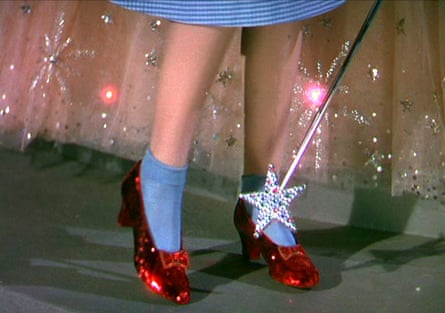
Landis says 90% of Hollywood costumes are now in the hands of private collectors, partly because of what they could fetch at auction, but also because looking after them is expensive and time-consuming for museums. Of course, such owners have the right to do whatever they want with their possessions. “One collector, who divested himself of a lot of material a few years back, was very generous about displaying it,” says Fricke. “But he was terrible at maintaining it. He would cart costumes around the country in a big duffel bag.” Because of this, the clothes were damaged.
Neglect is a rarity, however. Collectors have more in common, says Hall, than deep bank accounts. “They really can see why these things are historically important. I think they see themselves as temporary custodians, passing them on to the next generation.”
This may explain why collectors such as Scott Fortner are so saddened by the suspected damage to the Happy Birthday dress. Fortner believes he has the largest collection of fan-owned Monroe memorabilia in the world, from documents to personal effects and clothes. One favourite is a jacket won at auction in 2013 when Anna Strasberg sold the remaining Monroe pieces left to her husband, Lee. “I’m pretty sure it’s had her hair on it,” says Fortner. “It’s fragile and brittle hair that’s been broken off. And people have said that her hair was somewhat damaged due to all the dyeing.”
He also owns Monroe’s high school yearbook, which contains what is thought to be the first published picture of the star. How did he get it? Apparently, it’s all thanks to his considerable online presence. “A woman just messaged me and said, ‘You know, I’m in my 70s. I’m winding down. I’m getting rid of things. I would love for a true fan to have this.’”

Comments (…)
Sign in or create your Guardian account to join the discussion